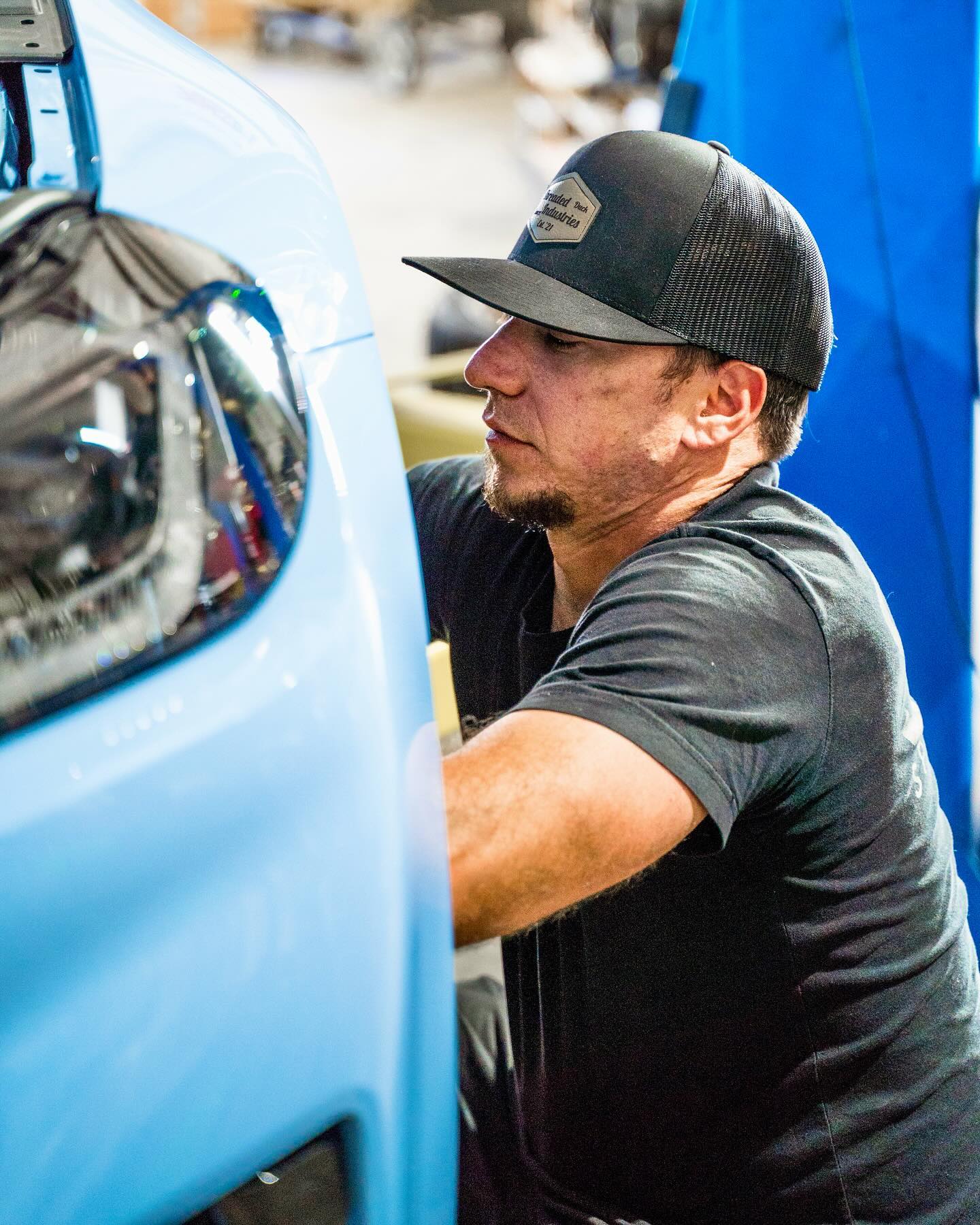
Top 7 Performance Upgrades for Cars in 2025
In 2025, performance upgrades are evolving faster than ever — and the gains you can unlock for your European or exotic car go far beyond raw horsepower. Whether you drive a BMW M-series, Porsche 911, Audi RS model, or a high-end marque like Lamborghini or Ferrari, the right modifications can deliver sharper handling, faster lap times, and longer-lasting reliability. This guide breaks down the seven most impactful upgrades for modern performance platforms, explaining how each works, what to watch out for, and how to get the most from your investment.

Upgrade One: Forced Induction Systems For Significant Power Gains
Forced induction remains the most direct way to increase engine power across turbocharged and naturally aspirated platforms. Upgrading to a larger turbocharger or adding a supercharger system can deliver substantial gains in midrange torque and peak output while maintaining engine reflexes when matched to proper fueling and engine management. On modern engines with direct injection, supporting hardware such as high pressure fuel pumps and larger injectors is often needed to ensure safe operation under boosted conditions.
Choose forced induction with an eye to drivability and thermal management. Installing a larger turbo often requires intercooler upgrades and revised cooling plumbing. For naturally aspirated engines, a roots or twin-screw supercharger kit can improve throttle response but will require tuned fuelling and ignition maps. When planning a forced induction upgrade, consult a tuner experienced with your platform and expect to budget for upgraded cooling, fuel system changes, and a calibrated ECU flash.
Practical Fitment And Compatibility Notes
Check engine internals before increasing boost on high-mileage motors.
Confirm turbocharger flange and oil feed compatibility with the factory housing.
Plan for boost control hardware and wastegate sizing to avoid compressor surge.
Shop Recommendations And Performance Tuning Workflow
Begin with a baseline dyno run to document current output and drivability.
Upgrade hardware, then proceed to staged tuning on a load-bearing dyno.
Verify knock control, intake charge temperature, and catalyzed exhaust compatibility during tuning.

Upgrade Two: Engine Management And Advanced Performance Tuning
Engine control tuning remains central to extracting reliable gains from hardware changes. Modern ECUs control timing, fueling, boost, throttle mapping, and emissions-related systems; a calibrated tune harmonizes all modifications for consistent results. Performance tuning can range from off-the-shelf maps to bespoke, flash-based calibrations and cloud-linked adaptive strategies that learn from ongoing vehicle conditions.
Use a tuner who understands platform-specific constraints such as torque limits in transmissions, variable cam timing behavior, and factory protections. For vehicles with dual-clutch or automatic gearboxes, software adjustments to shift logic and torque management are often necessary to translate engine power into on-road performance without drivetrain shock. Always test performance tuning with real-world validation runs and safety checks for temperature and knock.
Brand Notes For BMW, Porsche, And Audi Owners
BMW owners should review VANOS and Valvetronic behavior when pushing ignition and boost corrections.
Porsche calibrations often require careful attention to flat-plane crank or boxer cooling characteristics and exhaust scavenging across the rev range.
Audi platforms with longitudinal turbocharged engines require torque management strategies to keep quattro systems and DSG units within safe operating windows.
Ensuring Long Term Reliability After Tuning
Monitor fuel trims and knock control with datalogging during the first few hundred miles.
Schedule follow-up dyno checks after break-in or if new hardware is installed.
Maintain an open line of communication with your tuner and keep original ECU files backed up.
Upgrade Three: Intake And Exhaust Flow Upgrades To Free Up Power
Improving the engine's ability to breathe is a cost effective way to increase torque and throttle response. Upgraded intake systems reduce pressure drop into the turbo or throttle body, while high-flow exhaust headers and cat-back systems reduce backpressure and improve scavenging. For turbocharged modern engines, inlet and outlet flow improvements should be balanced to preserve turbo spool characteristics and emissions compliance where necessary.
When selecting components, prioritize quality materials and proper heat management. Stainless steel headers with ceramic coating or thermal wraps can help preserve underhood temperatures and protect intake air temperatures. Free-flowing catalytic options exist for track use, but owners should be aware of emissions rules and choose street-legal components if required.
Selecting Intake And Exhaust Components
Confirm heat shielding and intake routing to avoid hot air ingestion that reduces performance.
Use mandrel-bent piping for smooth exhaust flow and consistent backpressure characteristics.
Retain or upgrade oxygen sensor bungs and ensure ECU tuning matches the new flow characteristics.
Installation And Tuning Considerations
Install flow upgrades prior to ECU calibration to let the tuner account for changed air mass flow.
Perform cold-start and idle checks after installation to verify drivability.
Consider staged exhaust upgrades starting with headers or downpipe, then full systems for incremental gains.
Upgrade Four: Cooling And Intercooler Systems To Sustain Performance
Sustained performance requires a cooling system that handles repeated high-load runs without thermal degradation. Upgraded intercoolers reduce intake air temperatures under boost, which preserves power and reduces detonation risk. Radiator and oil cooler upgrades stabilize engine and lubrication temperatures under track or high ambient conditions, keeping performance consistent rather than peaky.
When improving cooling, focus on both capacity and flow. Larger cores and improved fin density increase heat rejection, while upgraded fans and coolant routing help manage temperature spikes. Oil coolers protect bearings and pistons during extended hard driving; install lines and fittings that minimize pressure loss and maintain oil circulation under high lateral loads.
Intercooler Selection And Sizing Guidance
Choose a core size that balances pressure drop and cooling mass; larger is not always better if it increases lag.
For front-engined cars, select intercoolers that fit crash and aerodynamic packaging without compromising airflow.
Pair intercooler upgrades with charge piping improvements and thermal barrier coatings when appropriate.
Oil And Radiator Upgrades For Track Use
Replace factory radiators with high-capacity units designed for repeated high-load exposure.
Install oil coolers with thermostatically controlled bypasses to maintain correct oil temperatures.
Use temperature monitoring during validation to ensure new components achieve intended gains.

Upgrade Five: Suspension And Chassis Tuning For Handling Precision
Performance upgrades are incomplete without addressing how the car handles increased speed. Suspension upgrades such as adjustable coilovers, upgraded sway bars, and reinforced bushings improve body control and contact patch management. Chassis stiffening through subframe braces and reinforced mounting points enhances feedback and predictability during hard cornering.
Tune suspension settings to match tires and intended use. Street-oriented setups favor compliance and comfort with moderate damping, while track-focused calibrations use stiffer springs and higher damping rates to reduce body motion. Alignment changes including camber, toe, and roll center adjustments yield measurable improvements in lap times and tire longevity when implemented by an alignment specialist.
Suspension Component Selection And Setup Workflow
Start with a shock and spring package that offers damping adjustability and valving suited to your car.
Use corner balancing and alignment after installation to set static weight distribution and roll angles.
Log handling performance across a test loop to fine-tune rebound and compression.
Chassis Reinforcement And Bushing Upgrades
Replace aging rubber bushings with polyurethane or high durometer units where NVH tolerances permit.
Add strut braces and lower control arm reinforcement to reduce flex in high-load situations.
Keep an eye on noise and vibration trade-offs when selecting firmer components.
Upgrade Six: Brake System And Wheel-Tire Packages For Stopping Power
Stopping ability becomes a limiting factor as engine power increases. Upgraded brake systems with larger rotors, multi-piston calipers, and track-oriented pads provide shorter stopping distances and better fade resistance. Pair brakes with high-performance tires and lightweight wheels to reduce unsprung mass and improve grip under heavy braking.
Match brake upgrades to the vehicle's intended use. Street upgrades emphasize longevity and low dust with performance ceramic or semi-metallic pads while track packages use aggressive compounds that tolerate higher operating temperatures. Combine brake upgrades with stainless steel lines and high-temperature fluids to reduce pedal fade and maintain consistent braking force.
Brake Upgrade Best Practices
Size rotors appropriate to vehicle weight and braking demands to avoid overheating.
Consider directional cooling ducts for endurance track use or autocross where repeated stops are common.
Replace rubber brake hoses with braided stainless steel to maintain pedal feel.
Wheel And Tire Selection Tips
Choose wheels that improve brake clearance and reduce rotational inertia without compromising strength.
Use tire compounds matched to driving conditions; softer compounds give more grip but require more frequent replacement.
Verify proper tire load rating for high-performance applications.
Upgrade Seven: Transmission, Clutch, And Drivetrain Strengthening For Durability
Drivetrain components must handle increased torque and altered power delivery after performance upgrades. Stronger clutches and performance flywheels provide reliable engagement and faster engine response. Upgrading transmission internals, torque converters, or adding reinforced axles can prevent premature failure under sustained high-load use.
Plan drivetrain upgrades in line with power goals to avoid bottlenecks. For vehicles with dual-clutch transmissions, software modifications and clutch pack upgrades reduce slip and improve shift speed. Manual gearbox owners benefit from uprated clutch packs and lightweight components that reduce rotating mass and improve rev response.
Clutch And Transmission Upgrade Path
Select a clutch that balances drivability and torque capacity for street and occasional track requirements.
For automatic units, consider torque converter and valve body upgrades to handle increased torque and preserve shift quality.
Rebuild or reinforce driveshafts and half shafts where increased torque exceeds factory tolerances.
Drivetrain Maintenance And Verification
Perform a full drivetrain inspection prior to performance upgrades to identify hidden wear.
Re-torque mounting hardware and inspect gear synchros after initial tuning runs.
Maintain fluid change intervals and use fluids specified for high temperature and pressure.
Complete Guide To Performance Upgrades For BMW, Porsche, And Audi In Two Thousand Twenty-Five
BMW, Porsche, and Audi each present unique considerations for performance upgrades in two thousand twenty-five. BMW engines often combine turbocharging with variable valve and cam systems that require careful ECU mapping; Porsche models have brand-specific exhaust and cooling geometries; Audi platforms frequently incorporate complex all-wheel-drive electronics that need torque-aware tuning. Owners should match upgrades to the vehicle use case, whether street, track day, or dedicated time attack.
Key recommendations across these three marques include prioritizing engine management after hardware changes, verifying transmission limits for high-torque builds, and choosing parts that preserve factory safety and emissions systems where required. For BMW M-series engines, focus on VANOS calibration and intercooler sizing. For Porsche flat engines, emphasize thermal management and exhaust flow. For Audi quattro systems, work with tuners who can adjust torque distribution and DSG shift strategies for consistency.
Brand-Specific Action Items
BMW: Validate valvetrain and VANOS behavior post-tune and ensure oil cooling is adequate under sustained loads.
Porsche: Upgrade intercooling and radiators for repeated high-load sessions and use exhaust designs that preserve catalytic efficiency if street driven.
Audi: Coordinate ECU and transmission tuning to prevent torque spikes that stress the all-wheel-drive differential and gearbox.
Upgrading Safely With Regulatory And Warranty Awareness
Preserve emissions compliance if the vehicle must remain street legal by using high-flow cats or emissions-compliant components.
Check factory warranty terms and document all upgrades with receipts and tuning logs to support claims if needed.
Work with a local specialist familiar with European makes and with access to manufacturer diagnostic tools.
SPEEDhaus Services For Oklahoma City European And Exotic Car Owners Seeking Performance Upgrades
At SPEEDhaus, we know performance isn’t just about going faster — it’s about making every mile more precise, responsive, and reliable. From baseline dyno testing to precision ECU calibration, cooling solutions, and drivetrain reinforcement, we bring deep expertise in BMW, Porsche, Audi, and exotic platforms.
If you’re ready to plan your 2025 performance build, let’s start with a one-on-one evaluation. We’ll map out the smartest upgrade path for your car, align it with your driving goals, and ensure every change delivers measurable results. Call or visit SPEEDhaus today — and let’s turn your vision into performance reality.

